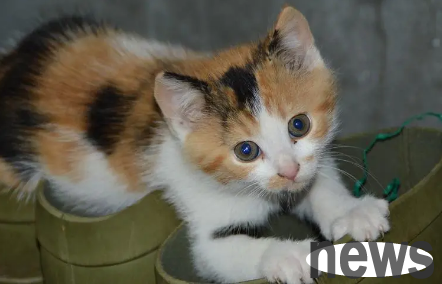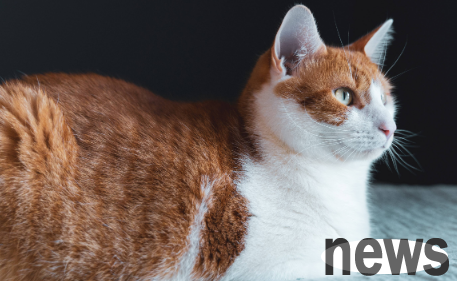Do you think the various substances in the formula table behind snacks and grains are unfathomable? Are you confused about the addition of vitamins and minerals? Is it all about technology and hard work?
No! No! This is really not the case. For dogs and cats, these are not just "health care". Come on, I have prepared a tool article for you guys who shovel. I'll keep it. Believe me, sometimes you really need it with a flash of inspiration.

Let me talk first - Vitamins are organic molecules, and their quantity is very small and can be used as regulators. With a few exceptions, they cannot be synthesized in the body and therefore must be obtained from food sources or through supplements.
Vitamins are considered essential for life. However, contact with air can easily lose activity due to oxidation (everyone knows it, it won’t break it). Therefore, many natural vitamins in food are mostly destroyed by food processing, long-term storage, open containers and moisture, and they will not achieve their ideal effects.
lipid-soluble↓
vitamin A
has physiological effects such as maintaining epithelial tissue integrity, improving pet vision and improving body immunity.
is generally found in animal tissues (especially internal organs). Normal animal diets will have animal tissues (whether it is staple food or snacks), so they are not very lacking in vitamin A. However, excessive intake will not only cause liver poisoning, but also cause joint stiffness and even paralysis (you need to take the amount, not the more you feed, the better)
Growing dogs require vitamin A more than adult dogs. Generally, the maintenance requirement for growing dogs is 220 IU/kg, while the maintenance requirement for adult dogs is 110 IU/kg.
*For typical carnivorous pet cats, 500-700 IU/kg vitamin A is required every day,
*When the cat is pregnant, breastfeeding, and chronic diseases for a long time, the demand for vitamin A is higher (can reach 1000 IU/kg/day). This is because cats lack the ability to convert carotene into vitamin A, so, it is impossible to expect to supplement it from feeding vegetables and carrots to cats.
Popular Science: Storage and absorption are mainly through the liver,
There are three main forms of vitamin A: retinol, retinaldehyde, and retinoic acid.
When vitamin A settles in the liver or travels in the blood, it mainly appears in the form of retinol; when it helps the body see things in the eyes, it is retinaldehyde; when they adjust gene expression in the cells and control the life cycle of the cell, they often have to transform into retinoic acid on the spot (this is the final form, that is, they cannot change back to the other two forms).
The vitamin A that you eat (i.e. in animal foods) is often retinol (the combination of fatty acids and retinol, such as retinol palmitate and retinol acetate), which are then converted into retinol in the body.
Plant-based foods do not have vitamin A at all, but many contain another compound: carotenoids.
This is a large family of compounds with more than 600 members, such as α-carotene, β-carotene, β-cryptoflavin, lycopene, ketoflavin, lutein, zeaxanthin... The main types of vitamin A (retinaldehyde) that we humans can use to effectively synthesize vitamin A (retinaldehyde) in the body are mainly the first three types, especially β-carotene. )
Vitamin D and E
are very important for the growth and development of dogs, especially the development of teeth and bones. Rickets will occur when vitamin D is deficient in young dogs, while chondroitosis will occur in adult dogs.
Because vitamin D is closely related to calcium and phosphorus metabolism, calcium and phosphorus deficiency or imbalance in feed can cause vitamin D deficiency.
Vitamin E is involved in pet reproductive performance and neural function, mainly from animal and plant tissues (various meat, animal tissue, peanut oil, wheat oil, etc., which are sufficient in most cat foods)
When the vitamin E content in feed reaches 200 mg/kg, increasing the vitamin E concentration in pet dog plasma can improve the total antioxidant ability of pet dogs. During pregnancy and development, additional attention should be paid to this aspect of vitamin intake.
It is important to emphasize that cats cannot obtain vitamin D by basking in the sun, but God closes a door and always opens a window. As long as cats consume a sufficient amount of meat diet (such as oil-rich fish, meat and egg yolks, etc.), they do not need to rely on their bodies to produce vitamin D
So think about how many living vitamins come from their diet, if they don’t eat or drink when they are sick? Isn't this just like sand? It will be dissipated as soon as you blow

Water-soluble vitamins↓
mainly include vitamins C, B vitamins, choline and inositol
, which can be extracted from water-soluble foods (mainly vegetables, fruits). Most pets do not have specific deficiency. Vitamin C can specifically remove oxygen free radicals in the body, prevent the continuous occurrence of free radical reactions and eliminate the accumulation of metabolites, and alleviate the damage to the intestinal mucosal barrier caused by oxygen free radical damage.
Cats are amazing. They can synthesize vitamin C through glucose in their bodies. They may not be able to take
from their diet, and most of the B vitamins they lack can also be obtained from food. The main vitamin B groups are B1, B3, B5, B6, and B12.
B1 (thiamine)
is mainly involved in carbohydrates as a medium for energy conversion into fat. It will affect the function of the central nervous system. It is very important for the growth and development of pet cats. The lack of thiamine will cause the cat to have a serious lack of learning ability. It is advisable to feed 0.4 mg every day, and the needs of cats that are pregnant, breastfeeding and sick are increased..
It is possible that cats at home are mentally retarded and lack this type of trace element
B3 (niacin)
. It mainly affects hematopoietic function, promotes iron absorption and blood cell production, and also plays a very important role in maintaining the normal function of the skin and the secretion of the digestive glands. In addition, for the nervous system, it can improve the excitability of the central nervous system (excessive intake can also lead to sensitivity and suspicion), and also has a certain protective effect on the cardiovascular system.
Cats are quite strange. This aspect cannot be absorbed by plant-based channels. Only animal sources can be absorbed. Dogs can synthesize it through tryptophan in food, and they don’t need any extra supplements. But cats cannot do it, but can only be obtained through food (and the demand is 4 times that of dogs)